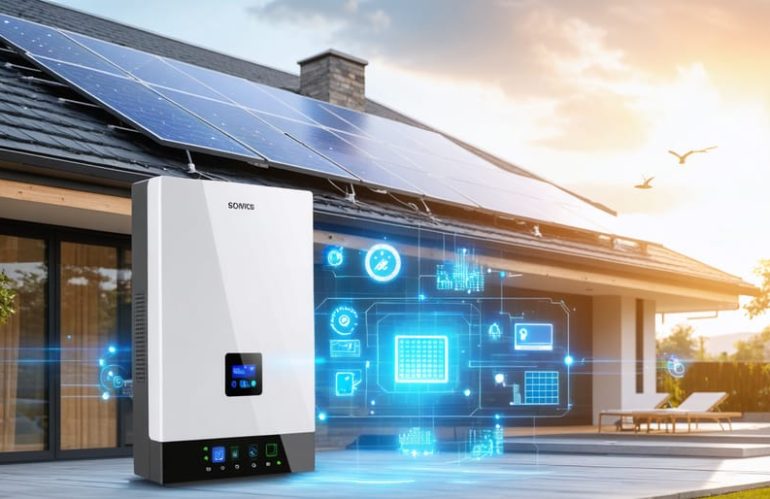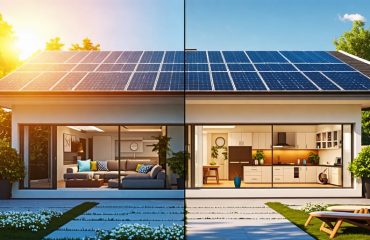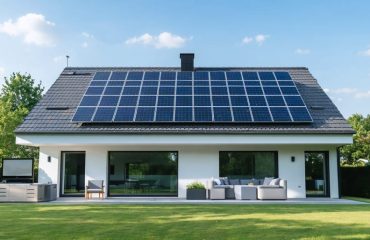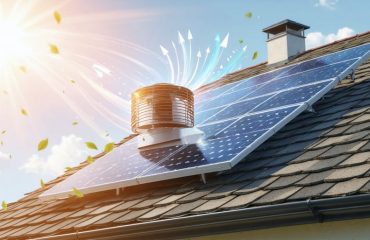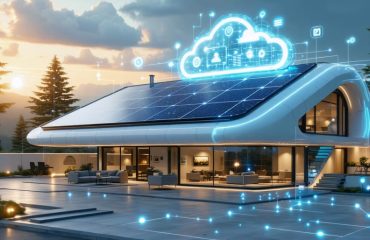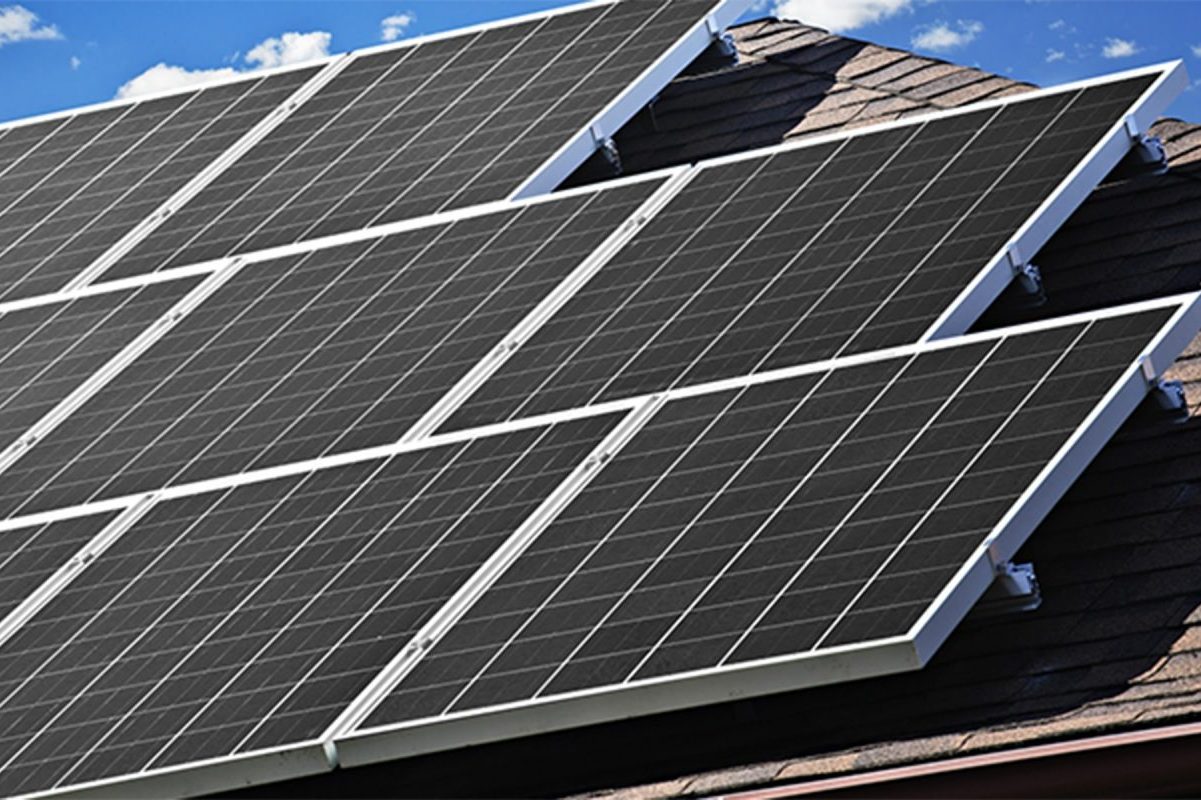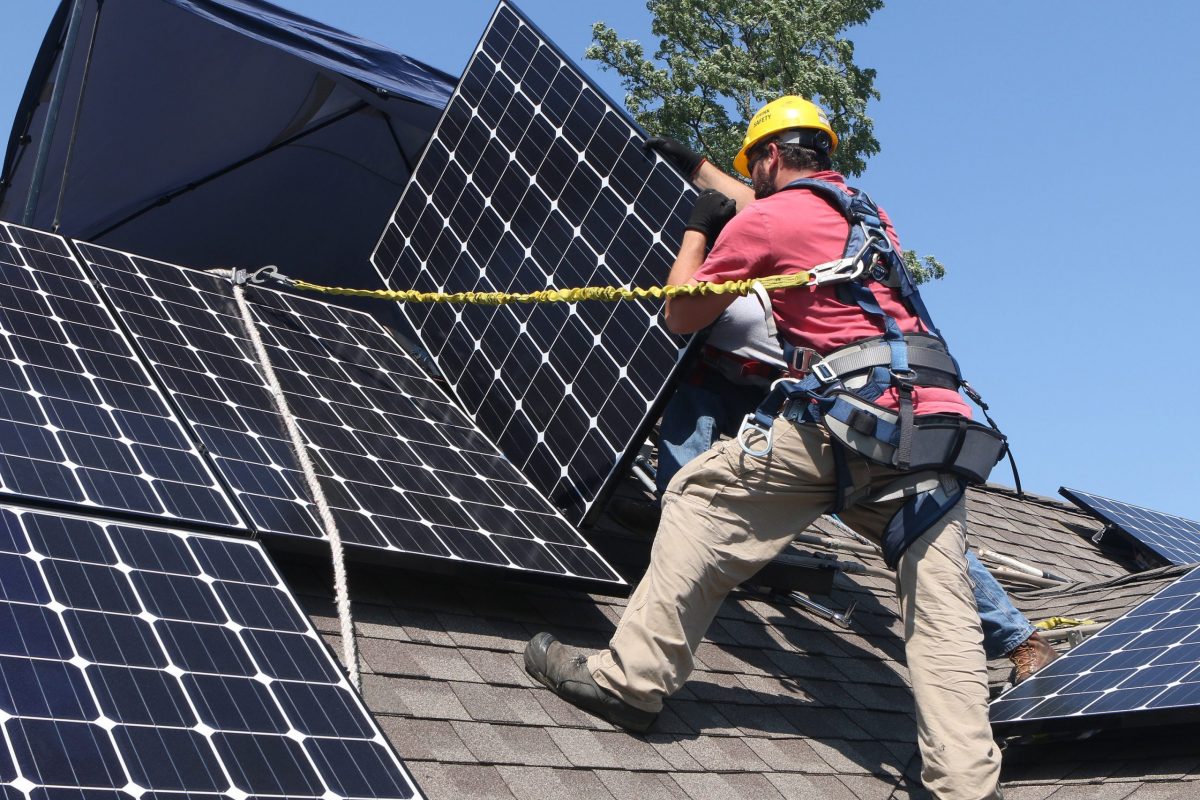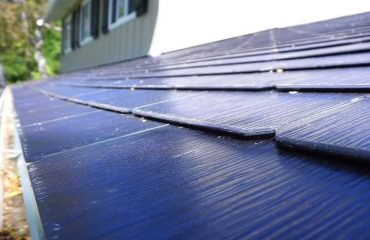Transform your home into a clean energy powerhouse with a solar inverter system – the intelligent bridge between sunlight and usable electricity. Modern inverters have revolutionized residential solar, converting DC power from panels into grid-compatible AC power while offering advanced monitoring capabilities and enhanced energy efficiency. As a cornerstone of smart solar upgrades, these systems now feature sophisticated power optimization, seamless battery integration, and intelligent grid communication.
Today’s home solar inverters deliver up to 99% efficiency, significantly reducing electricity bills while providing reliable backup power during outages. With plug-and-play installation, real-time performance tracking through smartphone apps, and built-in safety features, modern inverter systems make sustainable living more accessible than ever. Whether you’re considering your first solar installation or upgrading existing equipment, understanding inverter technology is crucial for maximizing your investment in clean, renewable energy.
This comprehensive guide explores everything you need to know about home solar inverter systems, from basic functionality to advanced features that can dramatically improve your solar system’s performance and return on investment.
How Modern Solar Inverters Transform Home Energy
Smart Features That Boost Energy Production
Modern solar inverters come packed with intelligent features that maximize your system’s performance. Real-time monitoring through smartphone apps lets you track energy production and consumption patterns from anywhere. Many systems include panel-level optimization, which ensures each solar panel operates at peak efficiency even if others are partially shaded or dirty.
Smart diagnostic capabilities alert you to potential issues before they become problems, while automatic voltage regulation helps maintain stable power output despite varying weather conditions. Some advanced inverters even learn from your energy usage patterns to optimize power distribution throughout the day.
Most current models include built-in data logging that generates detailed performance reports, helping you understand your system’s efficiency and identify areas for improvement. Anti-islanding protection automatically shuts down the system during power outages, ensuring safety for utility workers, while rapid shutdown features provide additional security during emergencies.
These smart features not only boost energy production but also extend system longevity through proactive maintenance and efficient operation, ultimately increasing your return on investment.
Real-Time Energy Management Made Simple
Modern solar inverter systems put energy management at your fingertips through intuitive smartphone apps and user-friendly dashboards. With just a few taps, you can monitor your solar production, track energy consumption, and make informed decisions about your power usage in real-time. These sophisticated yet simple interfaces enable you to view historical data, set energy-saving goals, and receive instant notifications about system performance.
The convenience of smart home integration means you can check your system’s status from anywhere, schedule power-intensive activities during peak solar production hours, and even automate your home’s energy usage patterns. Many apps also provide helpful insights and recommendations to maximize your solar investment, such as suggesting optimal times to run appliances or alerting you to potential maintenance needs.
These monitoring solutions often include easy-to-understand graphics and charts that help you visualize your energy independence journey. Whether you’re a tech enthusiast or simply looking for straightforward energy management, today’s solar inverter interfaces make it easier than ever to take control of your home’s power consumption while contributing to a greener future.
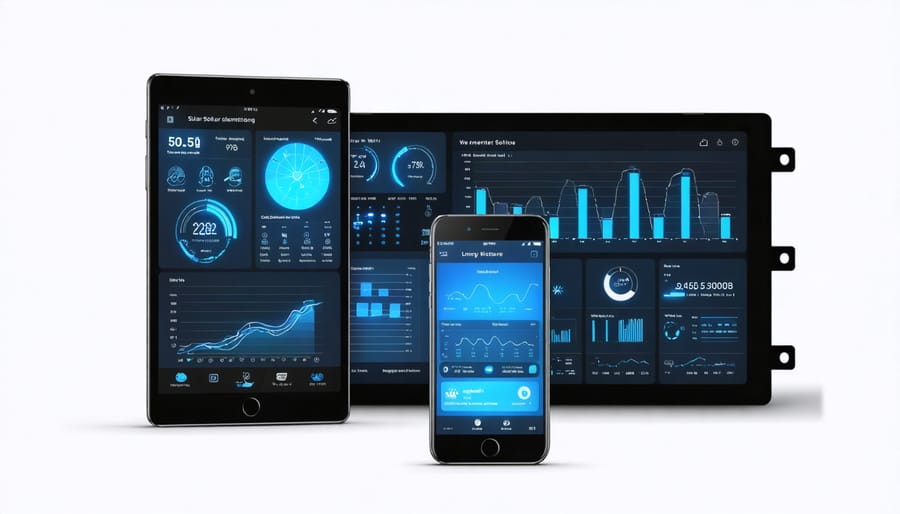
Key Benefits of Upgrading Your Solar Inverter
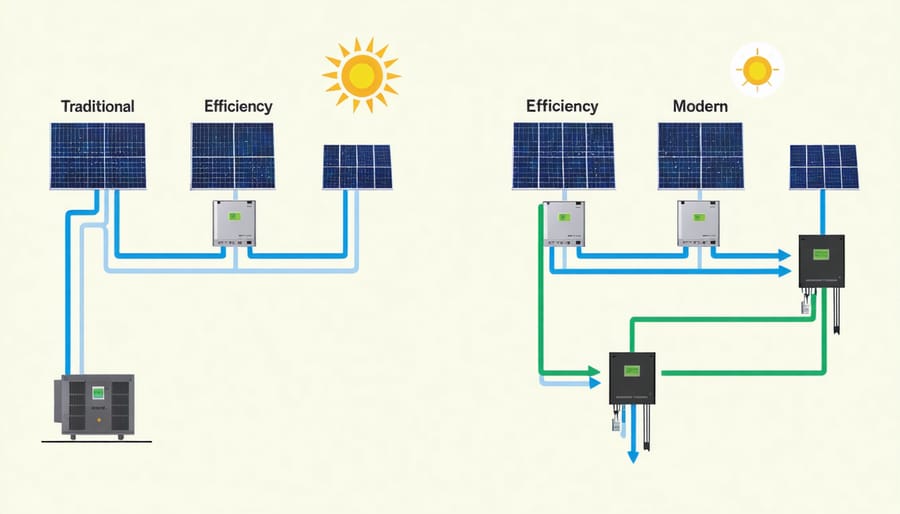
Better Energy Efficiency Means Lower Bills
Modern solar inverters are leading the charge in energy efficiency, translating directly into significant cost savings for homeowners. By converting DC power to AC power with efficiency rates of up to 98%, today’s inverters minimize energy loss during the conversion process, ensuring that nearly all the solar energy captured by your panels makes it to your home appliances or the grid.
This improved efficiency means you’re getting more usable power from your solar panels, which directly impacts your monthly electricity bills. For example, a household with a 6kW solar system using a high-efficiency inverter could save an additional $150-300 annually compared to older inverter models. These savings add up substantially over the system’s lifetime.
Beyond pure conversion efficiency, modern inverters include smart features that optimize power production throughout the day. Maximum Power Point Tracking (MPPT) technology continuously adjusts to changing weather conditions, ensuring optimal energy harvest even during partial shade or cloudy weather. Some models can even redirect excess power to battery storage systems instead of sending it back to the grid, maximizing self-consumption and further reducing electricity costs.
The financial benefits extend beyond direct energy savings. Many utility companies offer better feed-in tariffs for systems with high-efficiency inverters, recognizing their superior performance and grid stability benefits. Additionally, these modern systems typically require less maintenance and have longer lifespans, reducing long-term ownership costs.
Enhanced Reliability and Safety Features
Modern home solar inverter systems incorporate multiple layers of safety features and reliability measures that provide homeowners with peace of mind. Advanced arc fault detection and rapid shutdown capabilities ensure immediate system response to potential electrical issues, protecting both your home and family. These smart safety protocols automatically disconnect the system when necessary, preventing any electrical hazards during maintenance or emergency situations.
Today’s inverters are built with robust weather-resistant enclosures, typically rated IP65 or higher, protecting the internal components from dust, rain, and extreme temperatures. Most quality systems include built-in surge protection and ground fault monitoring, safeguarding your investment against power fluctuations and electrical anomalies.
The longevity of modern inverter systems is impressive, with many manufacturers offering warranties ranging from 10 to 25 years. Regular software updates enhance system performance and security, while self-diagnostic features alert homeowners to potential issues before they become problems. Many systems now include remote monitoring capabilities, allowing both homeowners and installers to track performance and address concerns promptly.
To ensure maximum reliability, these systems feature sophisticated thermal management systems and high-quality components designed for continuous operation. Anti-islanding protection prevents your system from operating during grid outages, protecting utility workers and your equipment. This combination of advanced safety features and durability makes modern solar inverter systems a secure, long-term investment for your home.
Choosing the Right Inverter Upgrade
Matching Your Home’s Energy Needs
Before investing in a solar inverter system, it’s crucial to accurately assess your home’s energy requirements. Start by reviewing your electricity bills from the past 12 months to understand your average monthly consumption. Pay special attention to seasonal variations, as your energy usage likely fluctuates between summer and winter months.
To get a precise picture of your needs, create an inventory of all major appliances and their power ratings. Consider both continuous-use items like refrigerators and intermittent-use devices such as washing machines. Don’t forget to account for future additions to your household, such as electric vehicles or home additions, which could significantly impact your energy requirements.
Most utility companies provide detailed energy usage reports that break down consumption by time of day. This information is valuable for determining peak usage periods and sizing your inverter system appropriately. A general rule of thumb is to add 20% to your current usage estimates to accommodate future needs and ensure system efficiency.
Consider your home’s physical characteristics as well. Factors like roof size, orientation, and shade patterns will influence your solar panel setup and, consequently, your inverter requirements. If you’re planning energy efficiency improvements such as better insulation or LED lighting, factor these changes into your calculations as they can reduce your overall energy needs.
For the most accurate assessment, consider working with a certified energy auditor who can provide a comprehensive evaluation of your home’s energy profile and help you make informed decisions about your inverter system size.
Future-Proof Features Worth Having
When investing in a solar inverter system, certain forward-thinking features can significantly enhance your system’s long-term value and adaptability. Smart monitoring capabilities are essential, allowing you to track performance through user-friendly mobile apps and web interfaces. Look for systems that offer detailed energy production analytics and consumption patterns in real-time.
Expandability is crucial – choose an inverter that can accommodate additional solar panels and battery storage solutions as your energy needs grow. Modern inverters should also include built-in surge protection and advanced grid support functions to handle future power quality requirements.
WiFi connectivity has become standard, but ensure your inverter supports over-the-air firmware updates. This feature keeps your system current with the latest improvements and cybersecurity measures without requiring hardware replacements.
Look for inverters with multiple power point tracking (MPPT) capabilities, which optimize energy harvest even when some panels are shaded or facing different directions. High-efficiency ratings (95% or better) and broad operating voltage ranges ensure maximum power production across varying conditions.
Smart export limiting features are becoming increasingly valuable as utility regulations evolve. These allow your system to automatically adjust output based on household consumption and grid requirements. Additionally, hybrid-ready capabilities future-proof your investment by enabling easy integration with energy storage systems when you’re ready to add batteries.
Choose inverters with comprehensive warranty coverage (at least 10 years) and manufacturer stability to ensure long-term support and maintenance availability. Remember, investing in these advanced features today can save significant costs and hassle in the future while maximizing your system’s performance and adaptability.
Installation and Integration Tips
Seamless Integration with Current Setup
Modern solar inverters are designed with compatibility in mind, making them remarkably adaptable to existing solar panel systems. Whether you’re upgrading an aging inverter or expanding your solar capacity, today’s inverters offer plug-and-play functionality that simplifies the integration process. Most contemporary models feature universal compatibility with various panel types and can work with both older and newer solar installations.
The key to successful integration lies in proper sizing and configuration. Your solar installer will ensure the new inverter’s specifications match your current panel array’s voltage and current requirements. Many modern inverters also come with smart monitoring capabilities that can help optimize the performance of older panels, potentially breathing new life into your existing system.
What’s particularly impressive is how new inverters can enhance the overall efficiency of your solar setup. They often include advanced features like power optimization and smart grid integration that weren’t available in older models. This means you can benefit from improved energy production without replacing your entire solar array.
Before making any changes to your system, it’s important to consider factors like inverter lifespan and maintenance requirements. Most installations can be completed within a day, with minimal disruption to your home’s power supply. The process typically involves disconnecting the old inverter, mounting the new unit, and reconfiguring the system settings – all while maintaining the integrity of your existing solar panel installation.
Professional Installation vs DIY
When considering the installation of a solar inverter system, homeowners face an important decision: professional installation or DIY. Professional installation offers several advantages, including expert knowledge, warranty protection, and compliance with local regulations. Certified installers understand the intricacies of electrical systems, can optimize system placement, and ensure all safety protocols are followed. They also handle necessary permits and inspections, saving you time and potential headaches.
DIY installation may seem appealing due to lower upfront costs, but it comes with significant responsibilities and risks. While some homeowners with electrical experience might successfully install simpler string inverters, microinverter installations are more complex and generally require professional expertise. DIY installers must thoroughly understand local building codes, electrical regulations, and safety requirements.
Consider these factors when making your decision:
– Installation complexity and your technical expertise
– Local regulations and permit requirements
– Warranty implications (DIY may void manufacturer warranties)
– Insurance considerations
– Time investment and tool requirements
– Safety concerns and risk assessment
For most homeowners, professional installation provides the best value, ensuring optimal system performance and peace of mind. The additional cost typically pays for itself through proper installation, maximum efficiency, and long-term reliability. However, if you’re technically inclined and willing to invest time in learning, a DIY approach might work for basic systems under appropriate circumstances.

Investing in a home solar inverter system represents a significant step toward energy independence and sustainable living. By converting your home to solar power, you’re not just reducing your carbon footprint; you’re making a smart financial decision that can lead to substantial savings on your energy bills for years to come. Modern solar inverter systems have become more efficient, reliable, and user-friendly than ever before, making now the perfect time to make the switch.
The benefits are clear: lower electricity costs, increased home value, reduced environmental impact, and potential tax incentives. With advanced monitoring capabilities and smart features, today’s inverter systems give you unprecedented control over your home’s energy production and consumption. The technology has matured to a point where maintenance requirements are minimal, and reliability is exceptional.
Whether you’re motivated by environmental concerns, energy independence, or financial savings, a solar inverter system can help you achieve your goals. As electricity costs continue to rise and climate concerns grow, the decision to invest in solar technology becomes increasingly compelling. By taking action today, you’re not just future-proofing your home’s energy needs – you’re joining a growing community of homeowners who are leading the charge toward a more sustainable future.
Don’t wait to start your solar journey. Connect with qualified installers, explore your options, and take the first step toward energy independence. The sooner you act, the sooner you can begin enjoying the numerous benefits of clean, renewable solar power in your home.

